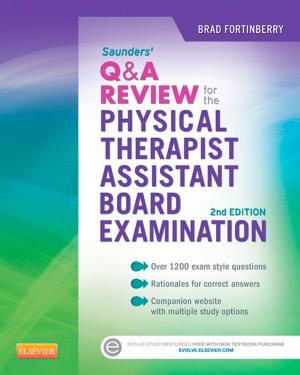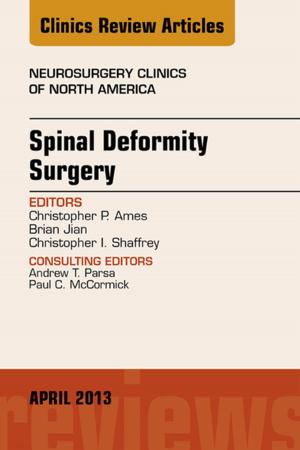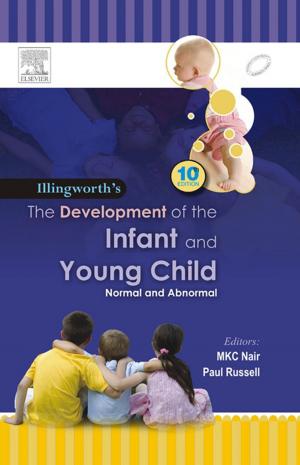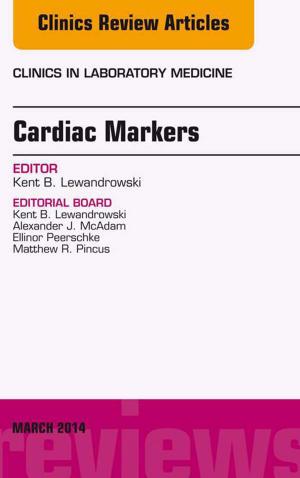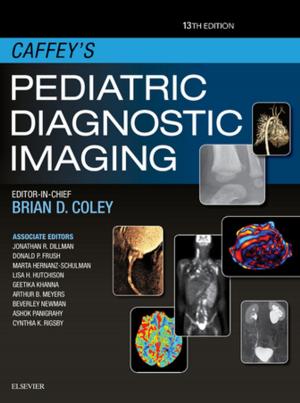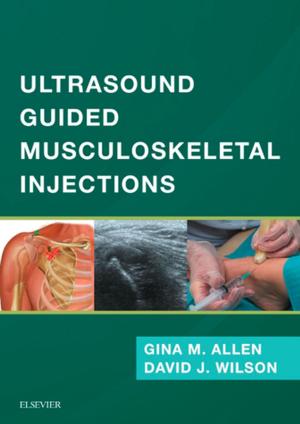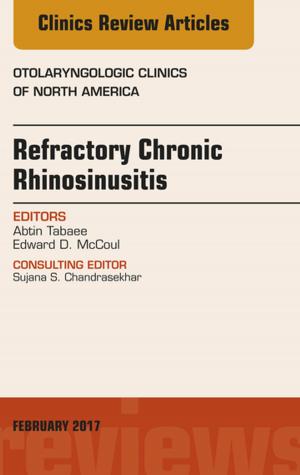Non-Invasive Ventilation, An Issue of Clinics in Perinatology, E-Book
Nonfiction, Health & Well Being, Medical, Specialties, Perinatology & Neonatology, Gynecology & Obstetrics| Author: | Bradley Yoder, MD, Haresh Kirpalani, BM, FRCP(Lond), MSc | ISBN: | 9780323477697 |
| Publisher: | Elsevier Health Sciences | Publication: | November 15, 2016 |
| Imprint: | Elsevier | Language: | English |
| Author: | Bradley Yoder, MD, Haresh Kirpalani, BM, FRCP(Lond), MSc |
| ISBN: | 9780323477697 |
| Publisher: | Elsevier Health Sciences |
| Publication: | November 15, 2016 |
| Imprint: | Elsevier |
| Language: | English |
Preterm birth interrupts the normal developmental progression of most organs, particularly when birth occurs at the lowest level of viability. An immediate task is to successfully transition to a post-natal life without a placental circulation. To do this demands careful management of the cardiorespiratory systems. To best help the fragile preterm infant at this demanding time, care-givers must remember two most pressing goals. These are first to maintain adequacy of gas exchange and delivery, while simultaneously minimizing any secondary injury to the fragile preterm lung. However, after these immediate priorities in the delivery room, the longer term effects of an immature lung development and its associated problems come to the forefront. These problems include the inflammation of perinatal infection, oxygen, and invasive mechanical ventilation. Both the immaturity itself, and secondary lung injury and its inflammation – collectively will often lead to the condition termed bronchopulmonary dysplasia (BPD). Although many of these infants may eventually be discharged to home without a need for oxygen supplementation or pulmonary medications, the long-term impact of interrupted lung development and secondary lung injury remain serious concerns. It is now well recognized that mechanical ventilation is pivotal to developing secondary lung injury and BPD. Consequently, a great deal of time and effort has been put into the development and application of non-invasive ventilator (NIV) approaches to supporting respiratory function in neonates. Since the landmark publication by Gregory and colleagues in 1967, nasal continuous positive airway pressure (nCPAP) has been the most commonly applied approach to NIV. This approach has been supported by the recent generation of randomized controlled trials. However, cumulatively these trials have shown only a small reduction in rates of BPD. Outside of the trial data, despite the wider application of nCPAP, rates of BPD remain relatively unchanged over recent years. This has led to investigations of other NIV approaches including nasal ventilation and high flow nasal cannula therapy. Not only have available modes increased, but so have the interfaces through which these modes may be applied. In the issue of Clinic in Perinatology, readers will find an up-to-date review of non-invasive approaches to supporting preterm respiratory function. This draws on the expertise of leading investigators in the field. This issue reviews the physiologic mechanisms by which the various approaches to NIV may support respiratory function; the evidence base supporting different NIV approaches; and adjunctive aspects of NIV therapy including their use during neonatal transport and the application of other supportive therapies such as inhaled NO.
Preterm birth interrupts the normal developmental progression of most organs, particularly when birth occurs at the lowest level of viability. An immediate task is to successfully transition to a post-natal life without a placental circulation. To do this demands careful management of the cardiorespiratory systems. To best help the fragile preterm infant at this demanding time, care-givers must remember two most pressing goals. These are first to maintain adequacy of gas exchange and delivery, while simultaneously minimizing any secondary injury to the fragile preterm lung. However, after these immediate priorities in the delivery room, the longer term effects of an immature lung development and its associated problems come to the forefront. These problems include the inflammation of perinatal infection, oxygen, and invasive mechanical ventilation. Both the immaturity itself, and secondary lung injury and its inflammation – collectively will often lead to the condition termed bronchopulmonary dysplasia (BPD). Although many of these infants may eventually be discharged to home without a need for oxygen supplementation or pulmonary medications, the long-term impact of interrupted lung development and secondary lung injury remain serious concerns. It is now well recognized that mechanical ventilation is pivotal to developing secondary lung injury and BPD. Consequently, a great deal of time and effort has been put into the development and application of non-invasive ventilator (NIV) approaches to supporting respiratory function in neonates. Since the landmark publication by Gregory and colleagues in 1967, nasal continuous positive airway pressure (nCPAP) has been the most commonly applied approach to NIV. This approach has been supported by the recent generation of randomized controlled trials. However, cumulatively these trials have shown only a small reduction in rates of BPD. Outside of the trial data, despite the wider application of nCPAP, rates of BPD remain relatively unchanged over recent years. This has led to investigations of other NIV approaches including nasal ventilation and high flow nasal cannula therapy. Not only have available modes increased, but so have the interfaces through which these modes may be applied. In the issue of Clinic in Perinatology, readers will find an up-to-date review of non-invasive approaches to supporting preterm respiratory function. This draws on the expertise of leading investigators in the field. This issue reviews the physiologic mechanisms by which the various approaches to NIV may support respiratory function; the evidence base supporting different NIV approaches; and adjunctive aspects of NIV therapy including their use during neonatal transport and the application of other supportive therapies such as inhaled NO.






